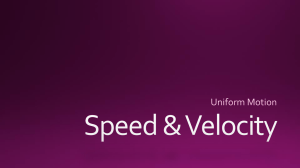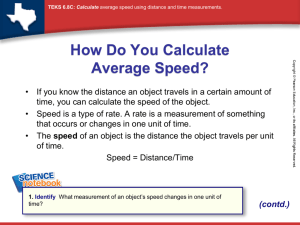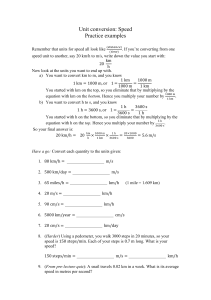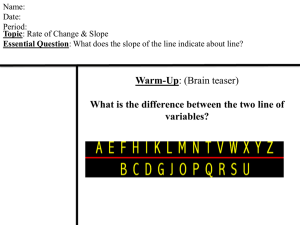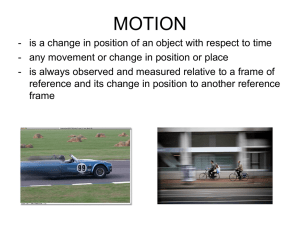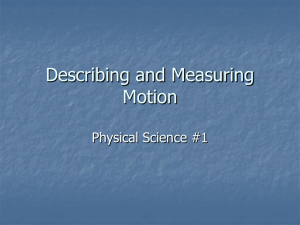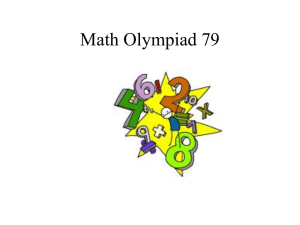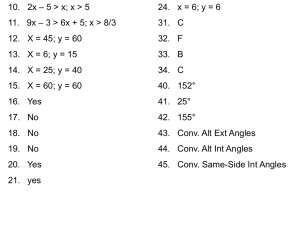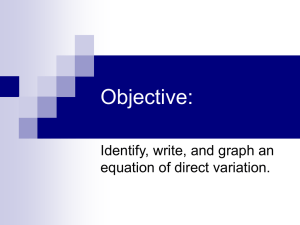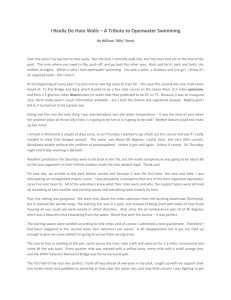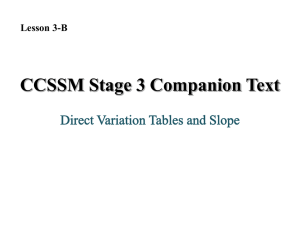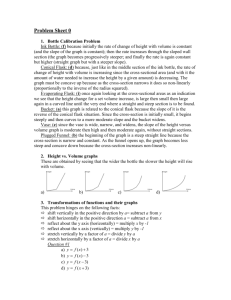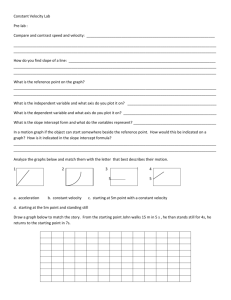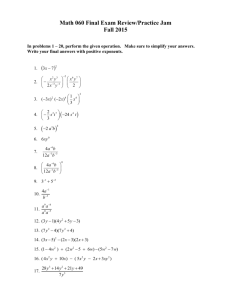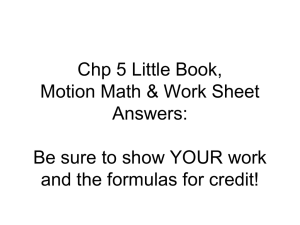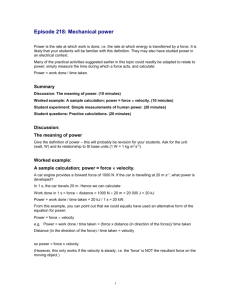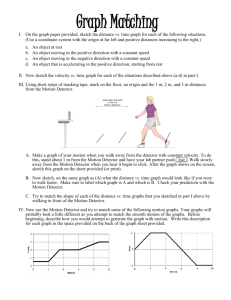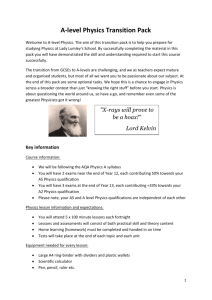Describing and Measuring Motion
advertisement
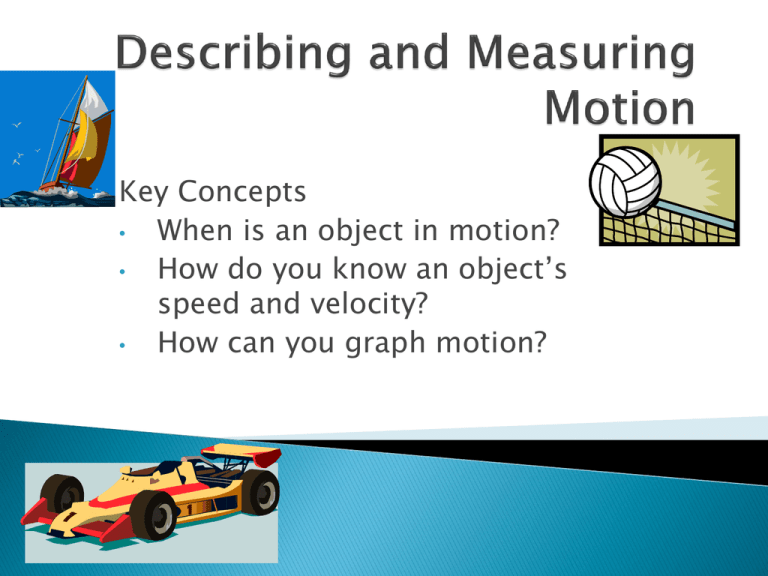
Key Concepts • When is an object in motion? • How do you know an object’s speed and velocity? • How can you graph motion? Motion Average speed Reference point Instantaneous speed International system of units Velocity Meter slope Speed Pace Distance Slow 5m Slow Medium 5s 5m Medium Fast Fast Time 5s 5m 5s Q: What is the relationship between the distance you walk, the time it takes you to walk, and your walking speed? A: The faster you walk, the less time it takes to move a certain distance. The faster you walk, the farther you will travel in a given time. If you walk a longer distance in a given amount of time, you are walking faster. Q: How do you know if an object is moving? A: An object is in motion if its distance from another object is changing. Q:What is a reference point? A:A reference point is a place or object used for comparison to determine if something is in motion. What kinds of objects make good reference points? What happens if your reference point is moving? Come up with some examples of moving reference points Examples: 2 buses or trains moving past each other. Q: Are you moving as you sit and read a book? A: It depends on your reference point If your chair is your reference point – No If the sun is your reference point – Yes (at 30km/s) Q: Why might ancient astronomers have been convinced that the sun, planets, and stars revolve around the Earth? Calculating Speed - Speed is a type of rate Speed of an object is the distance the object travels per unit of time The speed equation: Speed = Distance Time Examples: 1. A cyclist traveling 30 km in 1 hr has a speed of 30 km/hr 2. An ant that moves 2 cm in 1 second has a speed of 2cm/s Average Speed - divide the total distance by the total time Example: A cyclist travels 32 km during the first 2 hours, then 13 km the next hour. The average speed is total distance divided by total time Total distance = 32km +13km = 45 km Total time = 2h + 1 h =3h Average speed = 45km = 15km/h 3h Instantaneous speed - rate at which an object is moving at a given instant in time 1. It takes Dave 15 minutes to walks 1mile to the bus stop. He then travels for 15 minutes on the bus and travels 10 miles. Finally he walks 1 mile that takes him 15 minutes to his college class. What is Dave’s average speed? Total distance = 1 + 10 +1 =12 miles Total Time = 15min +15 min. + 15 min. = 45min. S=d/t = 12mile/45 min = .27 mile/min What system do we use in science to measure? What is the SI unit of length? What other SI units are used to measure length? Use a conversion factor to convert from one metric unit to another. Conversion factors are fractions in which the numerator and denominator represent equal amounts in different units. Ex: 1000mm 1m Ex. How many millimeters are in 14.5 m 14.5m X 1000mm = 14.5X1000mm 1m =14,500mm Dave traveled at .27 miles/min. What is his speed in miles/hr? .27 mile X 60 min = 16.0 mile/hr min 1 hr Velocity – speed in a given direction Why is it important to know an object’s speed and direction? Come up with examples of moving objects where is it crucial to know their speed and direction. Ex. A hurricane is traveling 20km/hr northward ◦ What is this object’s speed? ◦ What is the direction of this object’s motion You can show the motion of an object on a line graph by plotting distance vs time Distance vs Time 5 Distance 4 3 2 1 0 1 2 Time 3 4 Steepness of a line is slope Tells how fast one variable changes in relationship to another – rate of change (speed!!!) The steeper the slope the faster the speed A constant slope= motion at a constant speed 15 Distance 10 5 0 1 2 3 Time 4 5 Distance Vertical difference between 2 point = Rise Horizontal difference between 2 points = Run Slope = Rise Run Ex. Rise = 400 m and Run= 2minutes Slope= 400m/2 minutes = 200m/min 600 400 200 0 0 2 Time 7 6 Distance 5 4 3 2 1 0 1 2 3 4 5 6 7 Time 8 9 10


